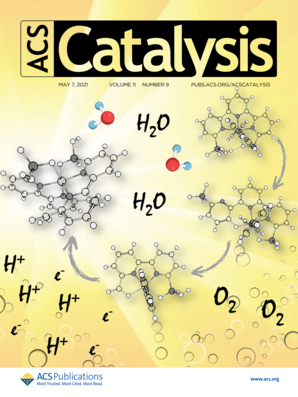Fate of the Molecular Ru–Phosphonate Water Oxidation Catalyst under Turnover Conditions
The present work uncovers the oxidative transformations of a recently reported polypyridyl phosphonate–phenoxo Ru-based water oxidation catalyst [RuIII(tPaO-κ-N2OPOC)(py)2]2–, 22– {tPaO5– is the 3-(hydroxo-[2,2′:6′,2″-terpyridine]-6,6″-diyl)bis(phosphonate)}, under turnover conditions. We show how the catalyst 22– suffers from oxidative degradation during water oxidation catalysis and generates the phosphonate–carboxylate Ru complex [RuII(Hbpc)(py)2], 3H, where bpc3– is 6′-phosphonato-[2,2′-bipyridine]-6-carboxylate. Complex 3H has been prepared by three different methods, and its oxidative transformations were also studied in detail. Under turnover conditions, complex 3H undergoes a series of transformations that can be monitored by electrochemical techniques including the generation of catalytically active molecular water oxidation catalyst intermediates and RuO2. In addition, catalytically inactive species such as [RuII(bpc-κ-N2OP)2] have also been detected.

Vereshchuk, N.; Holub, J.; Gil-Sepulcre, M.; Benet-Buchholz, J.; Llobet, A.
ACS Catal. 2021, 11, 5240–5247
DOI:
10.1021/acscatal.0c05363

Let's create a brighter future
Join our team to work with renowned researchers, tackle groundbreaking
projects and contribute to meaningful scientific advancements





















